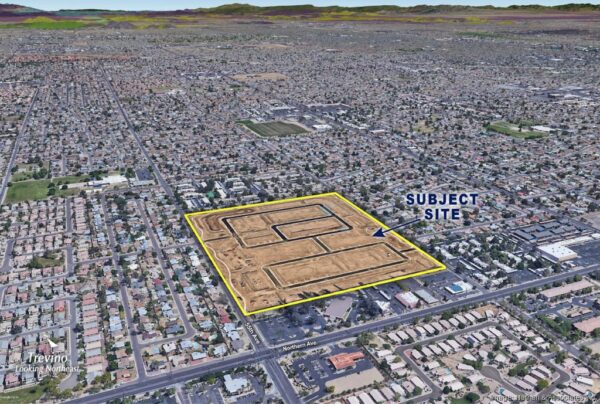The Monday Morning Quarterback
A quick analysis of important economic data released over the last week
By Elliot D. Pollack & Co | Rose Law Group Reporter
This week’s data still providing mixed messages regarding the health of the economy, with the exception of housing which continues to be substantially impacted on both the supply side and the demand side.
As far as mixed data goes, leading indicators fell for the fifth consecutive month. This means increased recession risk. The index suggests that the current negatives, including lower consumer confidence, stock market volatility, slowing labor markets, and weakness in both housing construction and manufacturing orders, may be the starting point to a broader spread of economic weakness that could result in mild recession in the next six months. However, there are still positive metrics in the current data. Retail sales overall were flat month over month and actually grew when you remove the effects of gasoline price declines. We are also seeing strength in both employment and labor force growth locally.
In terms of housing, the supply side issues of supply chain disruptions and lack of labor still persist, but now demand has dropped off. A perfect storm of dramatic price increases over the last two years, recently higher mortgage interest rates, persistent widespread inflation, and lower consumer confidence have combined to scare off potential home buyers. Nationally, existing home sales dropped nearly 6% month over month which represents a 20% drop year over year and construction activity dropped as well. Single family home starts are down over 10% from last month (down 18.5% from last year).
We are seeing the same trend locally with sales and new home permit activity down compared to last year. We are approaching more of a buyer’s market right now, which is a huge shift away from the hot seller’s market we had over the last two years. There are substantially more listings which offer both choice to the buyer and create more competition among sellers, but total listings are still below the inventory in a normal market. Listings are also staying on the market longer but are still below previous normal years. Sellers are reacting quickly and lowering list prices frequently to encourage sales. But sales prices are still only down about 3%-5% from the peak for now. With low buyer demand, the listing success rate has dropped substantially.
The difficulty we are finding in the housing data right now is the dramatic shifts over just a few short months. If you take a snapshot of housing metrics right now, it has the appearance of a pretty normal market. Number of listings, months’ supply, listing success, etc. are all near long run averages. But witnessing their extremely fast pace of change, their trajectories could put our housing market in a very different place in just a matter of months. If demand remains low, listings continue and to add to growing supply, then there could be continued downward pressure on prices. It could also level off and this could end up being the extent of the correction. Our sense is that price reductions may still have a way to go. But there is also very little distress in the market. Borrowers over the last several years have had excellent credit scores, foreclosures remain near all-time lows, and the job market is still very healthy
While the housing market is facing short-term weakness, our housing supply imbalance remain intact. We still face a substantial shortage of housing that we must build out of, and our long term growth projections suggest that demand will remain strong for years to come. We are simply not immune from market fluctuations and business cycles.
U.S. Snapshot:
- The Conference Board Leading Economic Index dropped 0.4 percent for the month. July’s decrease was the fifth consecutive month with a decline as risks of recession in the near term rise.
- After eight consecutive months of decline, home builders’ confidence dropped below the 50 threshold; anything below 50 is considered negative. According to the National Association of Home Builders/Wells Fargo Housing Market Index, August’s level was 49 as buyers and builders struggle to adjust to higher costs and a tighter monetary policy. One out of five builders have reported lowering prices in the last month.
- Permit activity fell 1.3% in July to a seasonally adjusted annual rate (SAAR) of 1.674 million. The decline was primarily in single family (4.3%), while multifamily permitting activity increased 2.8% in July. The number of starts fell 9.6% to a 1.446 million SAAR, with single family permits dropping 10.1%.
- Retail sales were flat in July as gasoline prices eased in the last few weeks. Retail sales excluding gasoline and auto increased 0.7% for the month. Year-over-year, all retail sales were up 10.3% as consumers kept spending despite getting less than what they did a year ago.
- Existing home sales dropped 5.9% in July, as the seasonally adjusted annual rate (SAAR) declined to 4.8 million. Single family sales dropped to 4.3 million, or 5.5% for the month, and were down 19% from a year ago. The median sales price for all homes declined 2.4% for the month but remained 10.8% above a year ago.
Arizona Snapshot:
- Employment grew in Arizona as the two major metros added 24,000 jobs in July. On a seasonally adjusted basis, Arizona added 22,900 jobs, with Greater Phoenix and Greater Tucson growing by 20,700 and 3,300, respectively.
- Across the state, the majority of gains were in Trade, Transportation, & Utilities (5,400), Education & Health Services (4,300) and Professional & Business Services (4,300). Only the information sector lost 100 jobs. The unemployment rate stayed at 3.3%, down from 4.9% a year ago.
- Housing in Arizona’s largest metros was heavily affected by higher mortgage rates and inflationary pressures in July, according to RLBrownReports.com. The number of resales and permits saw significant declines from last year’s level, while new home closings remained positive.
- Greater Phoenix saw a drop of 36.2% in the number of resales, bringing the YTD decline to 11.5%. The median sales prices dropped 3.9% for the month, but remained 13.2% above last year’s level. The number of permits decreased 37.7%, and were down 14% on a YTD basis. New home closings were up slightly for the month, but down 3.4% in 2022 compared to 2021.
- Greater Tucson saw annual declines of 42.7% and 27.4% in the number of permits and resales, respectively. New home sales were up 6% for the year. Year-to-date, permits are down almost 20% and resales have declined 6%. The median resale price declined 2.9% for the month.












